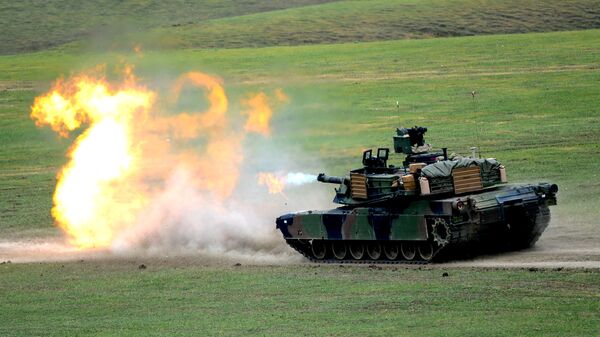The US Army plans to field a new combat vehicle by 2035 to replace the Bradley Infantry Fighting Vehicle and Abrams tank, and there’re only so many systems that can be added to an old design before reaching a point of diminishing returns, Maj. Gen. Eric Wesley said in 2016.
“We need to think more broadly,” Wesley said at the time, about “manned-unmanned teaming,” or robots and humans working collaboratively in a combat vehicle.
One way the army plans to do this is with “some kind of aided driving capability,” Chris Ostroksi, director of combat vehicle prototyping for the US Army, told C4ISRNET Monday. “For example, if you had some a priori data that would allow you to plot a better route,” Ostroski said. “We don’t want to line up our combat vehicles in a convoy, but we do want them to be able to aid in the driving.”
In addition to giving the vehicle’s computer a view of the landscape, high-tech imagery sensors will provide tank operators with a level of protection by minimizing their exposure on the battlefield. With the Abrams and Bradley tanks, “the commander and the driver have their heads out of the hatch, using their own human senses” to maneuver and fight,” Gene Klager, a researcher at the US Army, told C4ISRNET, noting, “soldiers are vulnerable to snipers and [improvised explosive devices], and there are challenges with being able to see all around the vehicle.”
The vehicle needs to be able to look at targets on the ground as well as in the air, researchers say, in order to engage threats like “helicopters and small drones.”
The sensors will help provide the troops in the tank with a look at what’s going on in the battlefield and double as a hostile fire-detection system that enables the tank to engage threats on its own. There are clearly some issues with allowing the vehicle to fire munitions by itself: “You could have an algorithm to detect everything, but it would tend to detect things you don’t want to detect,” Klager noted.
For instance, the sensor might have difficulty discerning when a flash of light 200 meters away is the sun glancing off something shiny or an enemy firing a weapon at the tank. Given the dangers of shooting at targets that aren’t actually targets, the service says a very low rate of false alarms is necessary for the fire detection system’s success as a fully-automated system.






